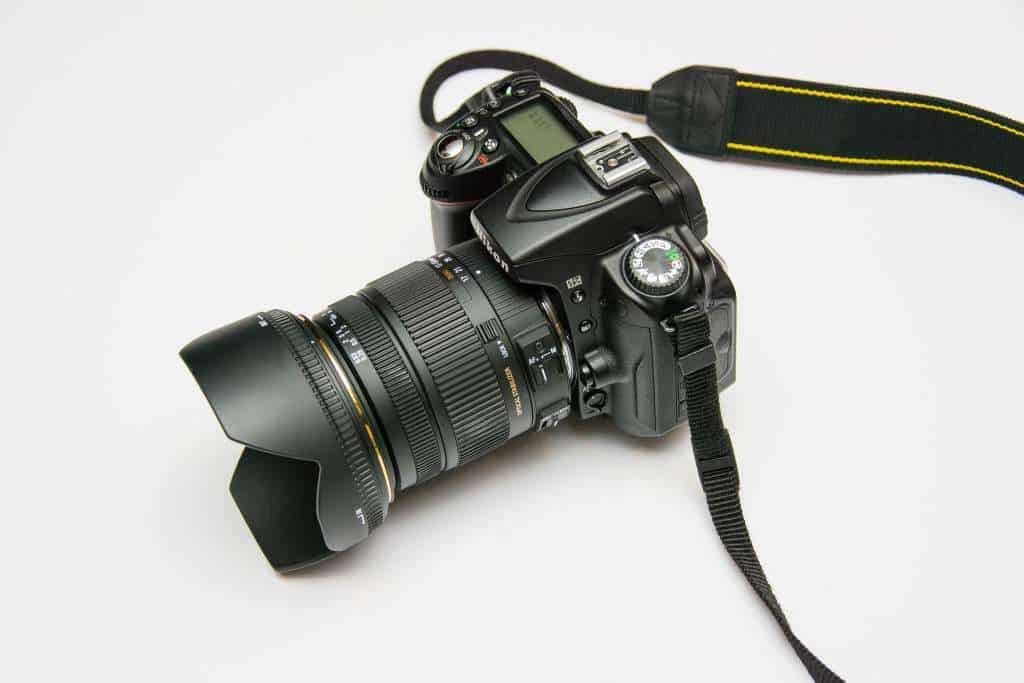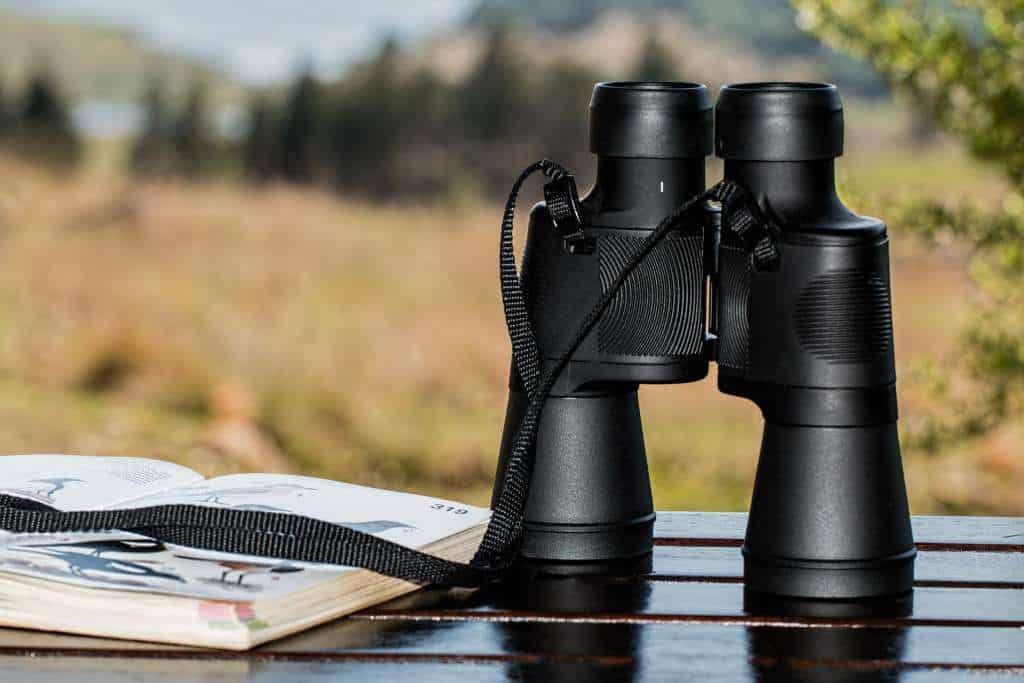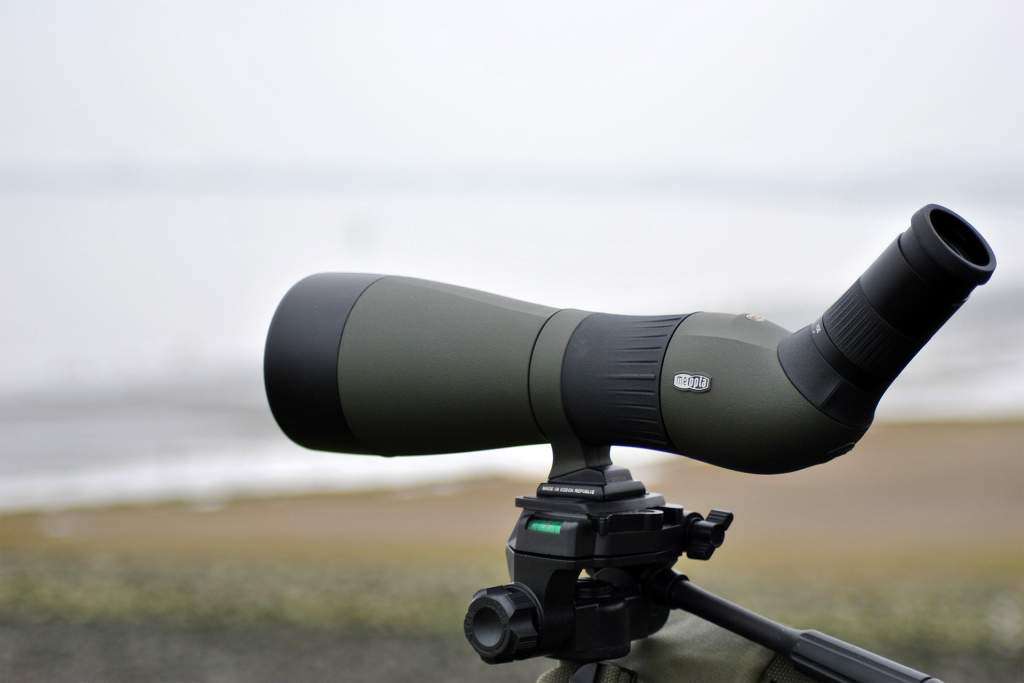
Do you have a passion for birdwatching or birding and do you want to start watching as a hobby? This could be your way of helping nature conserve its resources and animals. Thus, this scientific and fun-loving observation of birds has yielded many great and wonderful results over the years. Therefore, this is going to be a guide that will necessitate and enable you in your quest to commence bird watching. Therefore, we will examine more closely the definition, the difference between bird watching and birding, and a brief history.
Similarly, the benefits, types of birds and location, and equipment needed.
And finally, a glance at the environmental impact will be taken. To summarize, this will be your birdwatching or birding 101 guides for beginners. And a piece of additional knowledge for experts.
Table of Contents
- What is Bird watching?
- Difference between Bird watchers and Birders
- History of Birding and bird watching
- Bird Watching and Birding Gears
- 1. Journal and pen
- 2. Bird Watching and Birding APPS
- 3. Camera Used in Bird Watching and Birding
- 4. Bird Watching and Birding Binoculars
- 5. Spotting Scopes Used in Bird Watching and Birding
- 6. Bird Guides
- 7. Feeders for Bird Watching and Birding
- 8. Backpacks Used in Bird Watching and Birding
- 9. Sound and Video Recorders
- Bird Watching and Birding Stores
- Tips on How to Get Started on Bird watching and Birding
- Benefits of Bird Watching and Birding
- Environmental Impact of Bird watching and Birding
- Bird Locations
- Commonly used Slangs or Terms used in Bird Watching and Birding
What is Bird watching?
A definition of the subject in question should be defined in simple terms in order to grasp the information. Hence, bird watching is the observation of wildlife (birds) in their natural habitat. Hence it is either practiced for scientific or recreational purposes. There is some terminology that is used in this hobby and scientific observation. Namely;
Birdwatcher; This is an individual who watches birds in their natural state.
Birder; This is one who greatly pursues the hobby of watching, listening and, recording birds
Birding; This is an astute hobby of one, who enjoys birds, by watching, listening, and studying every activity that involves birds.
Twitch; This is the process of traveling a long distance to observe a bird. And those who engage in such a process are called twitchers.
There has been growing disagreement between birdwatching and birding. This difference will then be analyzed.
Difference between Bird watchers and Birders
Birdwatchers: these are predominantly people who observe birds during their spare time. Thus, they observe birds in their neighborhood, some of them are bird feeders. To sum it up they have a minor interest in birds. Furthermore, the birdwatchers allow the birds to come to them or just perch as they feed, they are not in hot pursuit of the birds. In addition, the watcher requires little or no equipment to perform this task. And may decide to either record their findings or not.
On the contrary, Birders are not passive observers rather they are active observers of birds. Therefore they pursue every observation with great passion and they tend to spend a lot of money on purchasing new gears. They travel far and wide to view new species and savor the experience.
History of Birding and bird watching
During, the 18th century, the interest in bird observation came to light. From the works of Gilbert White, Thomas Bewick, George Montagu, and John Clare. During the late 18th century, the Audubon Society called for the protection of birds because of the rising popularity of birding and birdwatching.
In 1901, Edmund Selous wrote a book titled “Bird watching”. That was the beginning of the phrase “Bird watching”. With the inventions of fast vehicles and planes, coupled with the reduced cost of traveling, this act gained increased popularity. Hence books written on the act of birding or birdwatching became best sellers.
on a whole, in its inception, it started out as a hobby, but now it has gained global recognition and is used for bird census and scientific purposes.
Bird Watching and Birding Gears

Starting out as a newbie requires some level of preparation. And its dependant on if you want to be a birder or birdwatcher. Hence the gear needed to start out in any capacity and become an expert are as follows;
- Journal and pen
- Apps
- Camera
- Binoculars
- Spotting Scopes
- Bird Guides
- Feeders
- Backpacks
- Sound and video Recorders
1. Journal and pen
If you are an agog birder, it will be great if you document or record your sightings. Hence, keeping a journal will aid in your remembrance of the bird’s physical and vocal features. Also, the location and habitat are taken note of. This process is done for easier identification. This toll was popular before the invention of smartphones, truly, there are people that still use these tools as it’s quicker to get a pen and a notepad and record your sightings.
2. Bird Watching and Birding APPS
With the advancements in technology and the inception of smartphones, the programming of applications compatible with smartphones has really made things simpler in birding exercises. Truly a rich vein of information is added into apps that are compatible with your device. Such information includes; directions to the nearest or farthest location to view a rare species, sounds of birds for easier identification, videos, pictures of birds, questions to enhance your knowledge about birds, and tips for a birder.
some of the recommended apps are;
- “Merlin” by the cornel lab of ornithology
- “Birdeye” for finding birds
- Cornell Lab Bird Q&A
- Audubon Bird Guide North America
- iBird Pro North America
These apps are compatible with android and iPhone users. All you need to do is go to the app store and search for any.
3. Camera Used in Bird Watching and Birding

Having a camera and carrying it along during sightings or observations, act as a very important tool in identification. Also knowing birds to be very artistic in nature, also provides the opportunity to take some shots for the long haul. Such shots help us appreciate nature and with just a click we can identify some rarest species on the planet once confirmation of its presence is given.
Thus here are some of the recommended camera for observations;
- Canon EOS Rebel T6 SLR ; ( comes with a whole lot of accessories such as memory card, extra lenses, UV filters, Strap, flash Tripod, camera bag, and a whole lot more ).
- Panasonic Lumix G7 4K Mirrorless (14 – 140mm) ; (posses great autofocusing capabilities, takes bright and clear pictures)
Furthermore, technology has improved to the extent of having a monocular attached to a smartphone. For instance the;
- Gosky Titan 12 x 50 High Power Prism and smartphone holder (provides high magnification and great close-up pictures.)
These are the recommended cameras for starters, although as a pro you might want to buy the latest gadget to get the best picture possible. In this case, it depends highly on your financial strength.
4. Bird Watching and Birding Binoculars

This is perhaps one of the most useful gears an enthusiastic observer should have. Because this gear brings the view of the bird closer to the eyes through powerful magnifying lenses. Hence in other to enjoy the experience of observation and sighting, it is recommended that an investment be made in getting a pair of binoculars. On a whole, getting good binoculars will help you get a clearer view without going too close and end up spooking the birds. Similar to the function of the camera, they are good for identification. Some of the recommended binoculars are;
- Nikon 7576 Monarch 5, 8 x 42 (this will provide a better view. also it is durable.)
- wingspan Optics Spectator 8×32 Compact ( it has a sharp clarity at 1000 yards, usually known as every birder’s dream)
- Bushnell Falcon 133410 7×35 (This is a great beginner pair, because of its ist focus properties and, also its 7x focus. It also has the capability of viewing at 1000 yards.)
- Leupold Yosemite’s (good for beginners)
- Bespin 8×21 (this is the kids special. It will make birding fun for your kids, as it posses fast-focus)
There are many more sophisticated binoculars, but it is better if you have those that come with harnesses. This will free up your hands during walks and ease the pains that come from holding.
5. Spotting Scopes Used in Bird Watching and Birding

These are high-powered scopes with greater lenses of magnification. This is for a better look, better identification of the species that are very far. For example, when you want to view a golden eagle on a tree branch a quarter-mile away from you. It doesn’t come cheap, but it’s worth it, as it comes along with zooming features of 20x to 60x. Again it is recommended that a spotting scope with a tripod stand be used in order to ease the heavy load of carrying it. A good example is the;
- Earth 20-60 x AE Waterproof Angles Spotting Scope with tripod ( it has powerful and high magnification. And it can rotate to an angle of 45° for easy viewing. Also comes along with multicolored lenses bright and clearer images at low light.)
6. Bird Guides
Before the inception of smartphones and the creation of apps, bird guides were in an old-school form that is in book form. These guides aid an observer to understand how to identify birds. In addition, these guides teach skills like the four-step approach to identification. which is (determining bird size and shape, main color pattern, behavior, and finally habitat structure.) Also, these guides tell you where to locate some lifers!
Some notable and handy guides are as follow;
- National Audubon Society Field Guide to North American Birds
- National Geographic Backyard Guide to the Birds of North America
- Stokes Beginners Guide to Birds: Eastern Region
- Peterson Field Guide to Birds of Eastern and Central America
These Guides are enriched with colorful pictures, sketches, range maps, habitat needs, tips for attracting favorites, and nesting habits. It comes in a pocket-size and is light in weight, which means it will easily fit into your backpack.
7. Feeders for Bird Watching and Birding

It brings the birds to your doorsteps or backyard. These are needed if you enjoy the presence of the birds. Hence there are feeders for various species, some recommended ones are namely;
- Black-oil Sunflower Feeder
- Windowsill feeder
- Natures Hangout window Bird Feeder
- Brome squirrel solution wild bird feeder
- Perky- pet copper panorama bird feeder
- Wild bill’s 12 stations squirrel proof bird feeder
When using feeders, the need for seeds arises. And different types of seeds attract different species all year round. Some seeds are as follows;
- Millet
- Thistle
- Mealworms
Fruits can also be used or a mixture of a variety of seeds like Wagner’s greatest variety blend can also be used. Likewise, you can attract single species or various species depending on your preferred choice of seeds.
8. Backpacks Used in Bird Watching and Birding

Sometimes, observations may be fun and daunting. And you will need a carry-on to help you carry some of the gadgets and also some snacks to replenish your energy. Then a backpack will be very handy, especially during field sightings. Some recommended Backpacks are listed subsequently;
- Venture Pal Lightweight Durable Backpack (it is made of durable light anti-tear material, multiple compartments, and is water-resistant)
- Outlander 20-33L Most durable Lightweight Day Pack (meets your sighting needs with many storage spaces and its light)
- Teton Sports Oasis 2L Hydration Backpack (it’s an adjustable bag with a place for water and your gear)
These backpacks are for long-distance sightings that will last for hours or even days.
9. Sound and Video Recorders
These are used to record bird vocalizations and it helps in identification. A good sound recorder is recommended if you choose to get one. On the one hand, Video recorders take video shots of the birds in their natural habitat. It is also used in identification and documentation. With the updates in smartphones’ hardware, you can perform all these actions using your smart device if you choose to.
On a whole, these are the basic gadgets or gears needed to have an exciting and insightful birding experience.
Bird Watching and Birding Stores
With everything now online, the best stores will deliver these gears to your doorsteps. some of the best stores are listed below;
- theaudubonshop
- wildbirdsstoreonline
- birders-store
- urbannaturestore
- wildbirdstore
- wildbirdhabitatstore
- frontrangebirding
- thebirdwatchersstore
- amazon
All you need to do is check them online and order any gear you need, and it will be delivered to you.
Tips on How to Get Started on Bird watching and Birding
Over the years, birders have developed techniques that can help them find and, get a good view of more birds. Because let’s face it, anyone can see a bird. Therefore here are some useful tips to enable you to see more birds and still have fun while at it.
1.Be Patient
Due to the nature of some birds, for example, a sparrow that hops a lot. It will need an observer with patience to wait for such species to settle down for a photograph or identification. Hence patience is required in the field for birds to finally show themselves.
2.Study the Habitat
Because of the vast nature of the habitat, and the enormous number of bird species. It is therefore important to study the habitat in order to know where to look for certain species. For instance, some birds like trees, others open fields, shrubs, and finally thickets.
3.Try to Avoid Sudden Movements
It has been documented that some species are highly nervous. Therefore any sudden movements can startle them enough to fly away. Because it takes stealth to view some species up close.
4.Stay Quiet
Birds are easily affected by loud noise, hence whispering is recommended during observations. Sometimes the happiness of seeing a lifer might want to make us gasp in awe, but we should practice whispering in such moments.
5.Pay Attention to the Crowd
Birds usually travel or feed in flocks, hence the need to follow the crowd of species in other to find the one you are looking for. also, you make sure you work for the flock, meaning that endeavor to go through all the species available at the moment and also search for more.
6.Get the sun Behind you
you know how looking at the sun makes color disappear, so it is with field sightings. You should try to walk in a way that the sun is always behind you so that you can easily identify and enjoy the scenery.
7.Avoid Bright Color Clothing
Perfect clothing is one that will blend with nature. Hence it is the recommended clothing to avoid being detected by the birds. Therefore no white clothing should be worn during observation. If not you will give your location away to the birds and in doing so, you end up spooking them.
8.Connect with Local birders
It is important to try to reach out to experienced local observers. Because they will help you through the ropes on how and what to do to become an expert. And as it’s being said, there’s joy in sharing information, you will get the latest information about birds. you can search for them on social media.
9.Spend on some basic equipment
If you are to take this seriously, you will have to invest in at least some binoculars. have the zeal to buy some gears to avoid borrowing and to also help you enjoy the view.
10.Be a Morning Person
most of the birds are active in the morning, you can hear their vocalization and the soothing sound they produce when they call. Therefore if you want to view more birds, you have to wake up early to observe and identify them. This will also require you to cultivate the habit of stepping outside and walking around. Again, you can learn how to mimic a call or try to practice pishing.
You now have it, some of the tips on getting started on your avian adventure!
Benefits of Bird Watching and Birding
With the increasing number of people joining this great circle of observers, it is then fair to say that they are seeing some benefits that are attracting such a large number. This action of observing birds in their natural habitat is very refreshing and educative, thus some of the importance/ benefits to humans will be listed subsequently.
Birding Quickens your Reflexes
Sometimes observation might take hours in the field before you finally get a good glimpse at the species you have been waiting for. Hence the need to be up and doing when the bird eventually perch. Because you will need to act quickly to either take a picture or use your binoculars, hence the need for fast and sharp reflexes. It is said that practice makes perfect, thus when you are more involved in field expedition, you will improve your reflexes. This act of being ready at all times may come in handy in some other instances.
Is a Wonderful Way of Making New Friends
We have a social community filled with love, which makes it easy to make lifelong friends. This gives a calm environment and a sense of safety just like the birds we observe. In this social circle, stories are told, experiences are shared and information is passed across. With the advancements in technology, we can now reach out and connect to birders and bird watchers all over the world. This can also lead us to explore and travel more since you can easily make friends. This can actually be an excuse for you to travel more.
It Allows Room for Soul Searching
The long hours spent, searching, sitting, and waiting for birds, leads to one performing self-examination of his or her deeds. You have enough time to meditate and set your emotions straight. Hence it is a therapeutic act. You can use the time to pause and take stock of what you have accomplished and what lays ahead. It avails you the time to clear your mind and live and appreciate the moment.
Is Good for your Health
With the inclusion of long walks, hiking, and running in search of a lifer or any bird to view, it will definitely keep you healthy. Becoming an agog observer will fire up your neurons and make new connections to your brain. Again it develops our sensory pathways as we tend to notice the slightest changes in habitat or movements from the birds. In addition, it helps to develop and build our emotional threshold, because it is a very fun activity and you can derive satisfaction. It has been noticed that since it is very engaging, it definitely builds our cardiovascular muscles, thus making our hearts strong and healthy. And you can also get fresh air from the outdoor activity.
It Develops a Love for Nature
With over 10,000 species of birds, scattered across different ecosystems and habitats, it is fair to say that birds are offering us an invitation to learn and appreciate nature. Because most of these birds have different habitats and are in the wild roaming freely. Hence we can see nature at its very best once you are hooked with the first experience.
There you have it if you are looking for a new hobby, to appreciate nature, or simply make new friends outside then birding and bird watching is for you. Because as it is listed above we can see the numerous benefits we gain from this exercise. Also, it can help to make children enjoy nature and experience life in a whole new way.
Environmental Impact of Bird watching and Birding

There has been a great cry for the preservation of biodiversity due to the changing climate. Thus, leading to greater policies in preserving it. Therefore we can say that this activity of bird observation has led to the call for more species to be preserved through maintaining healthy environmental practices. For instance, the population of penguins in Antarctica has reduced because of the melting ice caps. Hence it is changing their environment which makes it unfavorable for them to survive and thrive. In the same way, this activity has also helped in the population census of birds in the world. This census helps scientists determine if there are environmental threats to the birds or if a location needs to be listed under protection. So we can see that this is not only an activity that we derive pleasure but also an exercise where we help to improve the environment and keep the birds safe.
Bird Locations

As the earth is vast with many ecosystems, so also is the distribution of the many species. Some are found in a particular habitat and some are migratory in nature. Using some online platforms or apps you can locate any bird that has been observed or sighted and reported. some of the recommended online platforms are ebird and whatbird.
Commonly used Slangs or Terms used in Bird Watching and Birding
Being an activity on its own, it is therefore accompanied by its own slangs and terms. Therefore some of the slangs are as follows;
- BOP – Bird of Prey
- CHASE– To follow a rare species
- DIP– Missing out on seeing a rare bird
- LIFER– Bird species you have not seen in your life
- LIST– A list of birds you wish to see
- MEGA-RARITY– A highly rare bird
- MEGA-FIND– The act of finding a rare species
- MEGA– A rare bird
- VAGRANT– A bird that explores outside its natural environment or migratory route
- IBA– Important Bird Area
Some of the terms will be defined in the glossary of the guide of your choice.
On a whole, this activity or exercise is one that is worth trying and developing. It is a fun way to go out of the house and not binge-watching. You can go to places, travel, go on hiking, rafting, canoeing which involves canoe paddling just to view a Mega or Lifer. It can be daunting and fun at the same time. Therefore it is highly recommended to both the young and the old to go into.